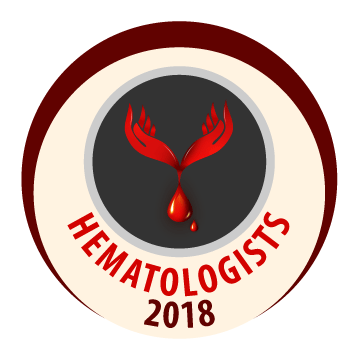
Chava Kimchi-Sarfaty
Center for Biologics Evaluation and Research, Food and Drug Administration, USA
Title: Assay-dependent results of ADAMTS13 activity in sickle cell disease
Biography
Biography: Chava Kimchi-Sarfaty
Abstract
Background: von Willebrand factor (VWF) is an adhesive multimeric plasma protein that is acutely elevated in sickle cell disease vaso-occlusive crisis (VOC) and may play a mechanistic role in the genesis of vaso-occlusion. However, discrepant findings concerning the functionality of ADAMTS13, the VWF-cleaving plasma protease, have been reported in sickle cell disease (SCD).
Objectives: To characterize ADAMTS13 activity in adult sickle cell patients using multiple in vitro assays and assess for alternative VWF-cleaving plasma proteases.
Methods: Plasma samples were obtained from adult sickle cell patients undergoing regular exchange transfusion (n=20) and healthy control patients (n=15). Plasmatic ADAMTS13 activity was determined by two VWF A2 domain peptidyl-based assays (FRETS VWF73 and VWF73 GST) and a shear-based assay employing the full-length VWF molecule. Plasma matrix metalloprotease-9 (MMP-9) was quantitated by ELISA.
Results: Using peptidyl-based assays, sickle cell disease plasma displayed significantly lower ADAMTS13 activity relative to healthy controls (0.695 vs. 1.109 IU/mL, respectively, for VWF73 GST ELISA, P<0.0001). By contrast, the cleavage potential against the full-length VWF molecule was normal or enhanced in sickle cell disease patient plasma. Plasma MMP-9 was elevated in SCD plasma and displayed preferential cleavage of the full length VWF molecule over peptidyl substrates.
Conclusions: Our findings demonstrate assay-dependent results of ADAMTS13 activity measurements in sickle cell disease, and imply the possible existence of alternative blood proteases capable of VWF cleavage. These findings may have implications for the interpretation of ADAMTS13 activity in sickle cell disease and for the monitoring of ADAMTS13 activity in clinical trials.

